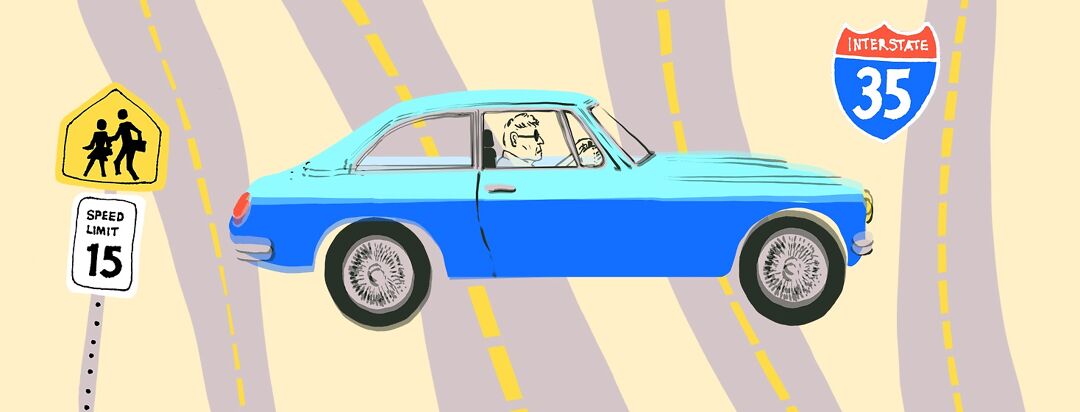Driving With Geographic Atrophy
I was diagnosed over 9 years ago with early stage dry age-related macular degeneration. For several years I progressed slowly to the intermediate stage. In July 2023, I was diagnosed with advanced dry age-related macular degeneration, or geographic atrophy (GA).
Giving up night driving
When I was diagnosed with macular degeneration, it was like my vision was put on a dimmer switch. In the early years I barely noticed any impact on my ability to drive. Over time, the blurring gradually grew worse. My vision was noticeably dimmer.
After a terrifying night driving experience, I gave up night driving. I was only a few miles from home in a familiar area. I turned on the wrong road and was lost on a narrow uninhabited mountain road.
Vision changes have impacted how I drive
GA has greatly affected my depth perception and ability to judge distance. I find myself parking too far from the curb. I now park next to another car and use that vehicle to help me judge how far to pull forward.
Colors have lost the vividness of previous times. This can make it much harder to drive in city traffic. Depending on the time of day or on overcast days, I may have difficulty seeing the yellow caution light. I live in a rural area with only 2 traffic signals in the entire county. It is an easy solution for me to avoid intersections with traffic signals.
Making changes to the way I drive
I never drive in unfamiliar areas. My county is extremely rural, with a total population of less than 20,000. I am blessed with family or friends willing to drive me to take me shopping or to the doctor if I don’t feel I can safely drive.
I have developed a form of double vision called ghost vision. I see a second image slightly above the actual object, such as an oncoming car. Most of the time my brain ignores the ghost image, much as it ignores my many floaters.
Since judging distance accurately has become a challenge, I no longer attempt to pass slow cars. Since I am retired, I can leave while allowing plenty of time to reach my destination. So many cars today are gray in color, which is the hardest color for me to see. Just as I no longer pass cars, I also take extra care at intersections. I check traffic in both directions at least twice to ensure I don’t pull out in front of a car. If possible, I avoid left-hand turns.
Deciding when to stop driving
You may be wondering why I still drive at all. When a person lives 15 miles from the nearest store, driving is sometimes necessary. My husband does all the driving unless he has to work.
In Oklahoma I am still legal to drive. Other states have much stricter vision requirements. In a large state with a total population of only 4 million, driving requirements are more lax. I often drive the 15 miles to town without meeting another vehicle.
I am anxious at each visit to the retina specialist. Will this be the time my doctor says I am no longer safe to drive? I hope to start treatment later this month to slow my progression. If successful, I may continue driving indefinitely. That is my hope.


Join the conversation